Alarming news of violence on the Upper Ohio flooded Pittsburgh in the late summer of 1777. On August 2, Joseph Ogle reported from Wheeling that a Native war party had wounded two men. James Booth, further south in Monongalia County, wrote that a mother and child had been killed and scalped and another captured. Col. David Shepherd of the Ohio County militia feared that the frontier would be evacuated given the “distressed situation.” These backcountry inhabitants begged Continental army officials for relief.[1] None was to be had, even amid disaffection to the Patriot cause so volatile and widespread that one man remembered it as “the Tory Year.”[2]
At that moment, the bulk of the Continental forces raised in the Upper Ohio region, an area also referred to as West Augusta, were marching to the fifes and drums of the Main Army under Gen. George Washington, on campaign against the British in the environs of Philadelphia. It was not the service for which those western Continentals had enlisted. Neither was it what state and local officials hoped for in fostering the creation of those units. The context of how these troops were raised, in particular the 13th Virginia Regiment, and how their dispositions were ultimately decided is a window into the complex political dynamics involved in creating and implementing American military policy. It also illuminates the unintended consequences for the unit and the community from which it originated.
The policies that ultimately impacted the soldiers of the 13th Virginia and their families evolved throughout the war. Virginia had long recognized the strategic importance of the Upper Ohio, and at the outset of the war its provisional government, the Virginia Convention, created independent companies of regular troops to garrison posts and bolster militia forces at Pittsburgh, Wheeling, and Point Pleasant along the Ohio River.[3] The preference for stationing troops for local defense continued when state government expanded the size of its regular forces in late 1775, and the executive was granted latitude in parceling out units in legislation.[4] Excepting the independent companies, Virginia’s regulars were taken onto the Continental establishment in 1776, however, and the state’s say in troop deployments was similarly relinquished to Continental authorities, who acted quickly.[5] When Brig. Gen. Charles Lee arrived in Williamsburg in March 1776 to assume command of Virginia’s troops, he concentrated the the Continental regiments into a single force. The troops were eventually dispatched to other theatres, leaving Virginia without a substantial body of professional soldiers to meet local exigencies.[6]
With the significant expansion of the Continental army in September 1776, though, Virginia anticipated that a number of its new troops could serve within the state. In the deliberations for creating the six new regiments of its Continental quota, West Augusta—by then the new counties of Monongalia, Yohogania, and Ohio—was to form a “distinctive” unit made up of troops recruited from the area, what would become the 13th Virginia. This diverged from normal practice, wherein companies from all over the state were amalgamated into regiments without regard to geography, perhaps reflecting the intent to leave the regiment in place.[7] An officer visiting Williamsburg during the legislative session of late 1776 thought so, reporting on rumors that “our Troops on the Ohio are Regimented” and that Col. William Crawford, a well-known figure in the region, would command them.[8] Their potential posting was not an unfounded proposition. A western Pennsylvania Continental regiment, the 8th, was then conducting an active defense north of Pittsburgh, a measure that had the approbation of Congress.[9] Nevertheless, Virginia sought clarification from its Congressional delegates that its Continentals could be kept on the frontier.[10] Gov. Patrick Henry was assuming they would be when he wrote to a backcountry militia colonel that the Upper Ohio’s defensive apparatus would indeed include Continental troops.[11]
Had the governor known the panic that had seized Congress he may have withheld his reassurances. The New York campaign had gone disastrously, virtually destroying the Continental army. That December, Washington believed “the game [was] pretty near up” unless he received sizable reinforcements.[12] Congress scoured the country for troops. It passed resolutions that redeployed the 8th Pennsylvania from the frontier and the 9th Virginia from the Eastern Shore, an area of Virginia vulnerable to British seaborne raids. All the “new levies” were to send along troops “as fast as they shall be raised.”[13] It is unclear if Virginia authorities believed any of their newest regiments were excluded from these orders, but their initial directives to their commanders only spurred on organizational efforts and reminded them to “hold themselves in readiness to march.”[14]
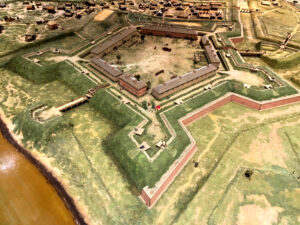
The American agent for Indian Affairs at Fort Pitt, George Morgan, apprised Congress of the recruiting efforts of the western Virginia regiments in January 1777. The 13th Virginia, he wrote, “fills up pretty fast” and would reach full-strength by February. Owing to what he deemed the “present happy Prospect of Peace with the Indians,” he believed that they “could well be spared” to reinforce the Main Army. In lieu of maintaining a permanent force of regulars in the region, he recommended stockpiling boats and other military stores at Fort Pitt to provision any force of militia or volunteers that would be called upon in the unlikely event of a widened war in the west.[15] Congress followed his recommendations, ordering the 13th Virginia “to march immediately by the nearest rout[e]s to join General Washington in New Jersey.” They also assumed control and responsibility for the independent companies on the Upper Ohio, presumably, in part, to guard the stores Morgan had mentioned.[16] Morgan’s and Congress’s suppositions that the Virginia militia could effectively counter any threats from Indigenous warriors were not unfounded. The Virginians’ logistical and operational successes of Dunmore’s War in 1774 suggested they were up to the task.[17] Yet this did not assuage discontent at the prospect of the 13th Virginia’s removal from its officers, its men, or the inhabitants of the region.
Colonel Crawford, nominally in command of the 13th Virginia, flatly refused to march the Continentals of West Augusta away. He told Washington that among many reasons he had for balking at the orders, “The Great probebility of an Endien War” was foremost among them. Moreover, the “inhabitants will be in Great fear under the Present Cercumstance” should they leave. There was also the promise made to the soldiers: “The Conditions was they was inlisted during the War, and if an Endien war was this spring, to be Continued there.” There were practical concerns as well, with a dearth of arms and other “necesarys” preventing their march.[18] The protest did not convince Washington. He asserted the Continental perspective plainly by stating that the war was there, in the east, where they were “wanted, greatly wanted,” whereas “The call for them on the Ohio, is only to be feared.” He instructed Crawford to follow Congressional orders if he had been ordered to march to New Jersey.[19]
They had indeed been ordered east, along with other Virginia regiments. The governor of Virginia sought to reinforce Congressional orders. Blanket instructions for the new regiments issued in March 1777 insisted that they march to New Jersey “in the most expeditious manner,” and if they had not completed their regiments to get moving with what men they had.[20] Washington, too, hurried on the new troops in a circular letter to regimental commanders in the same month.[21] Virginia still advocated for the retention of the 13th Virginia in the backcountry, though. In April 1777, the Virginia Executive Council urged the governor to write a letter to Congress requesting “that a Battalion may be continued” in the west on account of the “distressed situation of the Inhabitants on [the] Ohio will be in, upon the Removal of Continental troops from that quarter.”[22] Crawford, too, continued his lobbying efforts. He wrote to Congress in April that his regiment remained at Pitt at the behest of a local council of militia officers.[23] He was, remarkably, ignoring the directives of both Washington and Congress in delaying his departure.
Crawford was not alone in his loose interpretation or disregard of orders. Governor Henry lamented that “every possible method has been taken to hasten the march of the new Levys” of Virginia to no avail. Express letters to regimental commanders and newspaper notices had failed to get them to act.[24] New Continental regiments across the country were similarly slow to march. Washington admitted “a most painful anxiety” at the manpower shortage with the approach of the campaign season, predicting calamity “Unless the Levies arrive soon.”[25]
Part of the delay was owing to the fact that, like Virginia, several states wished to keep their new Continental regiments in place for local defense, Rhode Island and Connecticut among them. As much as the porous Ohio River frontier presented a defensive challenge, so, too, did miles of coastline that could fall prey to an enemy with a demonstrated capability for seaborne operations. In light of this, Connecticut had successfully lobbied Congress to retain its regiments in December 1776.[26] Washington issued new orders in the spring of 1777 to gather in these troops, writing to Governor Trumbull that “If we divide and detach our Forces to every part, where the Enemy may possibly attempt an impression, we shall effect no one good purpose, and in the end, destroy ourselves and subjugate our Country.”[27] Fielding another request for Continental troops for local security, he wrote to the governor of Rhode Island that it was his “duty to afford equal protection to every part of the Continent,” and he could only do so with an intact, concentrated army.[28]
Congress did not entirely ignore the security concerns of West Augusta. Though it fell short of countermanding the 13th Virginia’s or 8th Pennsylvania’s orders to march, it created the Western Department in April 1777 to centralize the logistical and operational command of embodied militia units of the Upper Ohio under the aegis of Continental Brig. Gen. Edward Hand.[29] When he arrived at Fort Pitt, he appealed to local militia officers’ “Zeal for public Service,” as he would need to rely on them for personnel since “Congress [had] directed the removal of the Continental Troops from this Quarter.”[30]
The departure of the 13th Virginia took place in the early summer of 1777. Most of its companies marched to the Philadelphia area under the command of one of its field officers, Maj. Charles Simms. It was in the eastern theatre that Col. William Russell formally took command of the regiment.[31] (Although Congress, Washington, and Colonel Crawford believed that Crawford led the unit, Russell had been elected by the Virginia legislature as colonel of the regiment, and had been formally placed in its command in February 1777. It was a misunderstanding for which Crawford felt slighted for years.)[32]
While the soldiery of the 13th Virginia did not leave a written record of their own discontent, they made their objections known in other ways. Namely, they deserted in droves. One 13th soldier, left behind in the single company still recruiting, “was employed as a sargent in taking deserters, many of the soldiers having deserted in consequence of the troops being ordered east of the mountains.”[33] The Monongalia County militia assisted in the endeavor, reporting to General Hand that at least some of the apprehended deserters were suspected of disaffection to the cause, if not outright treason.[34] The desertions continued when the regiment arrived in the east. As early as July 1777 company commanders were placing advertisements in Philadelphia newspapers for their absconded troops, a trend that continued through August.[35] Several made it home. General Hand had several 13th deserters from the Philadelphia campaign in custody back at Fort Pitt in November 1777.[36]
The West Augusta men were nevertheless integrated into the Main Army to fight in the Philadelphia Campaign. They were placed in Brig. Gen. Peter Muhlenberg’s brigade, and within that unit may have marched at the head of the army as it paraded through Philadelphia in August 1777.[37] The West Augusta men were only lightly engaged in the Battle of Brandywine, if at all.[38]
Hard fighting came at the Battle of Germantown, though. Muhlenberg’s brigade formed part of the left wing of the army that advanced on British positions on the foggy morning of October 4, 1777. When the attack began to falter, the 13th Virginia broke. One officer fighting near them blamed their “cowardice” for the whole wing’s collapse, a catastrophe that led to the destruction of the 9th Virginia, its entirely being killed, wounded, or captured.[39] That the 13th saw close, intense combat is evidenced by their sergeant major’s being “wounded in [his] leg in a very desperate manner and . . . also wounded through the cheek with a Bayonet.”[40] The conduct of several 13th officers during the battle was called into question in later court martials. Lt. Simon Morgan was “charg’d with Cowardice” but acquitted.[41] Capt. David McCormick was accused of “laying down in Time of Action and behaving in a Cowardly and unofficer like manner,” and Lt. Thomas Moore of “encouraging the Men to breed a Mutiny.” The charges were dropped for both.[42] When the regiment marched into Valley Forge in December 1777, casualties and desertions had decimated the unit. A mere 175 men appeared on the roster of the nine companies of the regiment with the Main Army that winter, and only twenty-seven of them were reported fit for duty in March and April 1778.[43]
It was an alarming situation for the regiment, and one that Colonel Russell sought to remedy. In February 1778 he wrote to Washington as part of an attempt to get the regiment redeployed to the Upper Ohio. He apprised Washington of the “assurances of the Officers who enlisted them to be continued on that side of the Mountain.” That the assurances were ignored was one thing, but that it entailed “leaving their helpless Families in a most miserable condition” was another, especially given that their relations “were soon after forced to fly into Forts to escape . . . danger” from Native parties.[44] Russell appealed directly to Congress as well, hoping to at least inform them of the terms with which the men had been enlisted.[45] In Washington’s own letter to Congress, he confessed “embarrassment” regarding their situation. While they’d indeed been enlisted for western service, several other regiments, including the 8th Pennsylvania, had “similar pretensions.” Despite his inclination to allow the 13th to return, given western security concerns and the potential solution to its desertion problem, doing so would place him in the awkward position of not being able to grant “like indulgence” to the others.[46] Colonel Russell had “strong reason to believe” that the 13th would be ordered west, though.[47]
It was a vexing and familiar problem for Washington. He fielded other such requests for Continental redeployments that spring, one from a Virginia delegate on the Eastern Shore that he denied as well.[48] The predicament was, in his estimation, “an evil that will ever result from inlistments for local purposes.” He awaited guidance from Congress on the disposition of the 13th, “considering the face of affairs to the Westward.”[49] In the meantime, he dispatched Colonel Russell to Pittsburgh to “collect and take command” of any deserters or detachments of the 13th “stragling about” the region and march them back to Valley Forge, hoping to gather his “whole force together” to enable him to “send succours to the Westward” if need arose.[50]
The Upper Ohio would indeed stand need of succor. The war with Indigenous Nations had intensified in the late summer of 1777. In addition to widespread, small-scale raids and ambushes, a sizeable war party besieged Fort Henry in Wheeling that September.[51] In November, men at Point Pleasant had murdered Cornstalk, a respected chief of the Shawnee who was, importantly, a leading proponent of that powerful nation’s neutrality.[52] General Hand was blunt in his assessment of the potential fallout of the killing. He guessed that “if [they] had anything to expect from that Nation it is now vanished.” Governor Henry was equally convinced that it meant a wider, deadlier war in the west. In his estimation, it was an act so potentially catastrophic that he was certain the perpetrators were Tories. “No man but an Enemy to American Independence [would] do it,” he wrote, “and thus oblige our People to be hunting after Indians in the Woods, instead of facing Genl Howe in the field.”[53]
The Loyalist presence in West Augusta gave credence to Governor Henry’s theory. Fearful rumors had spread that Tories were conspiring to link up with a detachment of British General Burgoyne’s force and British-allied Natives to attack Fort Pitt.[54] The militia’s response was harsh. One suspected Tory was drowned by a Monongalia County militia officer, Col. Zackquill Morgan. When he was charged with murder, a number of militia captains loyal to him resigned in protest. Lt. Col. John Gibson of the 13th Virginia reported that, as a result, the militia was “in the utmost confusion” and could not be depended upon for operations, a significant blow for the defensive posture of the region.[55] Congress intervened in November 1777. They dispatched commissioners to Fort Pitt to investigate reports of disaffection and to “take measures for suppressing the same.” They further requested that the Virginia government authorize the commissioners to arrest suspected Tories. Finally, they called on Colonel Crawford to assist General Hand in stabilizing the situation.[56] Virginia complied with Congress’s request and made provisions for the creation of a volunteer force of 600 men to quell tensions,[57] though that force never materialized.
The commission to the backcountry finally submitted its report in the spring of 1778, and Congress considered it that May. Although its findings suggested that the spirit of disaffection was “pretty well broken,” the need for regular troops for a “Standing Defence of the Country” or offensive operations was quite real, as the militia had proven “illy calculated” to do either.[58] Congress initially responded by ordering Washington to appoint a new commander to the Western Department, who would be reinforced by two entirely new regiments that it authorized..[59] Washington selected Brig. Gen. Lachlan McIntosh to replace General Hand.[60]
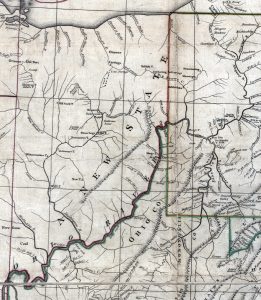
The head of Congress’s Board of War, Timothy Pickering, did not believe that the attempt to raise new units for western service would suffice. Instead, he urged Washington to send Continentals. While he knew the commander was reluctant to part with troops from the Main Army, he wrote that “none other will be equal to the duty” of defending the frontier or could hope to “recover [the] spirit and resolution” of the inhabitants.[61] Washington agreed, albeit reluctantly, and his natural choice for the assignment was the 13th Virginia, “as they were raised in that country” and a number of them, deserters or otherwise, were already in the region. He took the additional step of placing its former lieutenant colonel, John Gibson, in command of the regiment. Gibson had “Knowledge of the Indian country” and the “language & manners” of several Nations. He dispatched the 8th Pennsylvania back to the frontier as well.[62] Pickering’s opinion on the proposed new units proved prescient, for General McIntosh reported that efforts for their recruitment had yet to materialize in June 1778.[63]
While the soldiers of the 13th Virginia may have been relieved to be on their way home to West Augusta, it was far from easy service toward which they marched. Soon after they’d departed, Congress called for the Western Department to undertake an offensive to strike the British post at Detroit. It was an operation that, if carried out, would require their traversing of hundreds of miles of hostile territory at a great distance from their base of supplies.[64] They amended their orders later that summer to instead allow McIntosh to strike any practical target in the Ohio country. Though a less daunting directive, it nevertheless initiated the mission that would have the 13th Virginia campaigning in Ohio through the winter of 1778-1779.[65] Thus the regiment spent a month in late winter besieged at Fort Laurens on the banks of the Tuscarawas River, after suffering more than a dozen men killed in a single ambush.[66] The siege devolved to the men boiling and eating old moccasins to stave off hunger before a relief force finally arrived.[67]
Whether their redeployment to the Upper Ohio yielded positive results, including those anticipated by numerous proponents of keeping them stationed there, is difficult to ascertain. The impact was mixed, at best. The numbers of men in the regiment did increase. The 13th boasted more than 300 soldiers in its ranks in 1779 and 1780, never again reaching the nadir that it did at Valley Forge.[68] But many of the inhabitants they served were uninspired by their presence. In late 1780, Col. Daniel Brodhead, then commanding the Western Department, wrote that he “lear[ned] more and more of the disaffection of many of the inhabitants . . . The King of Britain’s health is often drunk . . . & I believe those wish to see the Regular Troops removed from this Department.”[69] Nor did they feel a modicum of safety from “ye Scalping Knife, and Tomhack.”[70]
The tide of desertions, though somewhat abated, never fully stopped, either. In a request for reassignment, the regiment’s lieutenant colonel, Richard Campbell, wrote that “it would Be for the Good of the reigt & the Service to have them Removed from here, for [they] have been raised in this Countrey & thus have so many Acquaintances & the Opening for settling the New Cuntery that they are Constantly Deserting.” Lieutenant Colonel Campbell added, finally, that he doubted the regimental commander, Colonel Gibson, would agree with him. His “Connections in this Country” gave him personal motives for wishing for them to remain on the Upper Ohio,[71] suggesting that the political wrangling for where the 13th Virginia would serve would continue as long as the regiment existed.
[1] Calendar of letters, including Joseph Ogle to Edward Hand, August 2, 1777; James Booth to Hand, August 2, 1777; David Sheperd to Hand, August 4, 1777; Thomas McGuire and Edward Perins to Hand, August 13, 1777 in Louise Kellog and Reuben G. Thwaites, eds., Frontier Defense on the Upper Ohio, 1777-1778 (Madison: Wisconsin Historical Society, 1912), 36-42.
[2] Jared C. Lobdell, ed., Indian Warfare in Western Pennsylvania and North West Virginia at the Time of the American Revolution; Including the Narrative of Indian and Tory Depredations by John Crawford, the Military Reminiscences of Captain Henry Jolly, and the Narrative of Lydia Boggs Shepherd Cruger, with Notes by Lyman Copeland Draper (Heritage Books, 1992), 42 57-58.
[3] John E. Selby, The Revolution in Virginia, 1775-1783 (Williamsburg: The Colonial Williamsburg Foundation, 1988), 57; Gabriel Neville, “Virginia’s Independent Frontier Companies, Part One: 1775-1776.” 8th Virginia Regiment, March 17, 2021 www.8thvirginia.com/blog/virginias-independent-frontier-companies-part-one.
[4] William W. Hening, ed., The Statutes at Large; Being a Collection of All the Laws of Virginia from the First Session of the Legislature in the Year 1619, Vol. 9 (Richmond: J & G Cochran, Printers, 1821), 75-92.
[5] Robert K. Wright, The Continental Army (Washington, DC: Government Printing Office, 1983), 71.
[6] Selby, Revolution in Virginia, 89-90, 128.
[7] Hening, Statutes, 179-184.
[8] Capt. William McKee to Col. William Fleming, November 2, 1776 in Louise Kellog and Reuben G. Thwaites, eds., The Revolution on the Upper Ohio, 1775-1777 (Madison: Wisconsin Historical Society, 1908), 214-216.
[9] Report of the Commissioners of Indian Affairs in Kellog and Thwaites, eds., Revolution on the Upper Ohio, 199-204; Worthington C. Ford, ed., Journals of the Continental Congress, 1774-1789: Vol.6, 1776 October 9 – December 31 (Washington, DC: Government Printing Office, 1906), 922 (JCC).
[10] Journal of the House of Delegates of Virginia, Anno Domini, 1776 (Richmond: Samuel Shepherd & Co., 1828), 50, 64-70.
[11] Patrick Henry to Col. Dorsey Pentecost, December 16, 1777 in H. R. McIllwaine, ed., Official Letters of the Governor, Vol. 1: Patrick Henry (Richmond: Virginia State Library, 1926), 76-77.
[12] George Washington to Samuel Washington, December 18, 1776, founders.archives.gov/documents/Washington/03-07-02-0299.
[13] JCC, 6:976, 1043.
[14] H.R. McIlwaine, ed., Journals of the Council of the State of Virginia, Vol. 1, July 12, 1776 – October 2, 1777 (Richmond: Virginia State Library, 1931), 308-313.
[15] George Morgan to John Hancock, January 4, 1777 in CARLI Digital Collections, Edward E. Ayer Digital Collections, Newberry Library, collections.carli.illinois.edu/digital/collection/nby_eeayer/id/31314.
[16] JCC, 7:18-23.
[17] Glenn F. Williams, Dunmore’s War: America’s Last Colonial Conflict (Yardley: Westholme Publishing, 2017), 307.
[18] William Crawford to Washington, February 12, 1777, founders.archives.gov/documents/Washington/03-08-02-0338.
[19] Washington to Crawford, February 20, 1777 in George Washington Papers, Series 3, Varick Transcripts, 1775-1785, Subseries 3B: Continental and State Military Personnel, Letterbook 2: August 1, 1776 – March 31, 1777. Library of Congress, Manuscript/Mixed Material, loc.gov/resource/mgw3b.002, 142-143.
[20] Patrick Henry to Charles Lewis, February 21, 1777 in McIlwaine, Official Letters, Vol. 1, 111; McIlwaine, Journals of the Council, Vol. 1, 368-369.
[21] Circular letter to Maryland and Virginia Colonels, March 12, 1777 in George Washington Papers, Series 3, Subseries 3B: Continental and State Military Personnel, Letterbook 2: August 1, 1776 – March 31, 1777, loc.gov/resource/mgw3b.002, 178-179.
[22] McIllwaine, Journals of the Council, 382.
[23] Crawford to John Hancock, April 22, 1777 in Kellog and Thwaites, Revolution on the Upper Ohio, 249-251
[24] Henry to Richard Henry Lee, March 28, 1777 in McIlwaine, Journals of the Council, 126.
[25] Washington to the President of Continental Congress, March 14, 1777 in George Washington Papers, Series 3, Subseries 3A: Continental Congress, Letterbook 2: Sept. 24, 1776 – Aug. 30, 1777, loc.gov/resource/mgw3a.002, 100-102.
[26] JCC, 6:1021.
[27] Washington to Jonathan Trumbull, May 11, 1777 in George Washington Papers, Series 3, Subseries 3C: Civil Officials and Private Citizens, Letterbook 2: January 2, 1777 – June 20, 1779 loc.gov/item/mgw3c.002/, 55-57.
[28] Washington to Nicholas Cooke, April 3, 1777 in ibid., 34-35.
[29] JCC, 7:247, 252, 270.
[30] Hand to David Shepherd, June 3, 1777 in Kellog and Thwaites, Frontier Defense, 1-3.
[31] Pension application of John Harges, S35382, revwarapps.org/s35382.pdf; pension application of George Fitzgerald, S39523, revwarapps.org/s39523.pdf.
[32] JCC, 7:128; Journal of the House of Delegates, 104; McIlwaine, Journals of the Council, Vol. 1, 337-339; Crawford to Washington, July 12, 1779 in Willshire Butterfield, ed., The Washington-Crawford Letters: Being the Correspondence Between George Washington and William Crawford, from 1767 to 1781, Concerning Western Lands (Cincinnati: R. Clarke & Co., 1877), 70-72.
[33] Pension application of John Dent, W4663, revwarapps.org/w4663.pdf.
[34] Zackquill Morgan to Hand, July 8, 1777 in Kellog and Thwaites, Frontier Defense, 18; Morgan to Hand, August 29, 1777 in ibid., 52-53.
[35] Philip Katcher, Uniforms of the Continental Army (York: Shumway Publisher, 1981), 177; Pennsylvania Evening Post, August 3, 1777.
[36] Hand to Washington, November 9, 1777, founders.archives.gov/documents/Washington/03-12-02-0171.
[37] General orders, May 22, 1777 in George Washington Papers, Series 3, Subseries 3G, General Orders, Letterbook 2: October 1, 1776 – December 31, 1777, www.loc.gov/resource/mgw3g.002, 82-83; General Orders, August 23, 1777 in ibid., 177-179.
[38] Christopher Ward, The War of the Revolution, Vol. 1 (New York: The MacMillan Company, 1952), 353.
[39] “Diary of Lieutenant James McMichael, of the Pennsylvania Line, 1776-1778,” The Pennsylvania Magazine of History and Biography 16, no. 2 (1892), 153 quoted in Thomas J. McGuire, The Philadelphia Campaign, Vol. 2: Germantown and the Roads to Valley Forge (Mechanicsburg: Stackpole Books, 2007), 50, 114-116.
[40] Pension application of John Vance, W6338, revwarapps.org/w6338.pdf.
[41] General orders, October 19, 1777 in “Orderly Book of General John Peter Muhlenberg, March 26 – December 20, 1777,” in PMHB 35, no. 1 (1911), 87.
[42] General Orders, October 26, 1777 in “Orderly Book of General John Peter Muhlenberg, March 26 – December 20, 1777,” PMHB 35, no. 2 (1911), 160.
[43] Charles Lesser, ed., The Sinews of Independence: Monthly Strength Returns of the Continental Army (Chicago: University of Chicago Press, 1976), 54-55, 60-61, 68-69; valleyforgemusterroll.org/13th-virginia-regiment/.
[44] William Russell to Washington, February 24, 1778, founders.archives.gov/documents/Washington/03-13-02-0559.
[45] JCC, 10:51-153.
[46] Washington to President of Congress, February 27, 1778 in George Washington Papers, Series 3, Subseries 3A, Continental Congress, 1775-1785: Letterbook 3: September 1, 1777 – August 31, 1778, loc.gov/resource/mgw3a.003, 151-153.
[47] Russell to Fleming, March 1, 1778 in Kellog and Thwaites, eds., Frontier Defense, 209-214.
[48] Washington to Southy Simpson, February 21, 1778 in George Washington Papers, Series 3, Subseries 3C: Civil Officials and Private Citizens, Letterbook 2: January 2, 1777 – June 20, 1779, loc.gov/item/mgw3c.002/, 159-160.
[49] Washington to Horatio Gates, March 9, 1778, founders.archives.gov/documents/Washington/03-14-02-0085.
[50] Washington to Gates, March 15, 1778 in George Washington Papers, Series 3, Subseries 3A, Continental Congress, 1775-1785: Letterbook 3: September 1, 1777 – August 31, 1778, www.loc.gov/resource/mgw3a.003, 177-178.
[51] Hand to Russell, October 14, 1777 in Kellog and Thwaites, Frontier Defense, 134.
[52] Gregory E. Dowd, A Spirited Resistance: The North American Indian Struggle for Unity, 1745-1815 (Baltimore: The John Hopkins University Press, 1992), 75-77.
[53] Henry to Fleming, February 19, 1778 in Kellog and Thwaites, Frontier Defense, 205-209.
[54] Lobdell, Indian Warfare, 42, 57-58.
[55] John Gibson to Hand, October 22, 1777 in Kellog and Thwaites, Frontier Defense, 142; Earl L. Core, The Monongalia Story: A Bicentennial History, Vol. 2 The Pioneers (Parsons: McClain Printing Company, 1974), 11-14, 33-34.
[56] JCC, 9:942-945.
[57] Hening, Statutes, 374-375.
[58] Henry Laurens to Washington, May 3, 1778, founders.archives.gov/documents/Washington/03-15-02-0076.
[59] JCC, 11:416-417.
[60] Washington to Laurens, May 12, 1778 in George Washington Papers, Series 3, Subseries 3A, Continental Congress, 1775-1785: Letterbook 3: September 1, 1777 – August 31, 1778. loc.gov/resource/mgw3a.003, 208-210.
[61] Timothy Pickering to Washington, May 19, 1778 in Louise Kellog, ed., Frontier Advance on the Upper Ohio, 1778-1779 (Madison: Wisconsin Historical Society, 1916), 55-56.
[62] Washington to Pickering, May 23, 1778 in in George Washington Papers, Series 3, Subseries 3A, Continental Congress, 1775-1785: Letterbook 3: September 1, 1777 – August 31, 1778. loc.gov/resource/mgw3a.003, 215-216.
[63] Lachlan McIntosh to Washington, June 7, 1778, founders.archives.gov/documents/Washington/03-15-02-0358.
[64] JCC, 11:587-589.
[65] Ibid., 719-721.
[66] David P. Ervin, “A Choice Body of Men: An Overview of the Continental Army on the Upper Ohio, 1775-1783,” Journal of the American Revolution, May 11, 2021, allthingsliberty.com/2021/05/a-choice-body-of-men-the-continental-army-on-the-upper-ohio/.
[67] Recollections of Benjamin Biggs in Kellog, Frontier Advance, 256-257.
[68] Lesser, Sinews of Independence, 140-141, 144-145, 154, 168-169, 172-173, 184-185, 192-193, 196-197.
[69] Daniel Brodhead to Richard Peters, December 7, 1780 in Louise Kellog, ed., Frontier Retreat on the Upper Ohio, 1779-1781 (Madison: Wisconsin Historical Society, 1917), 301-302.
[70] Memorial of Pittsburgh Inhabitants in ibid.,360-363.
[71] Richard Campbell to Washington, March 16, 1780 in ibid., 149-150.
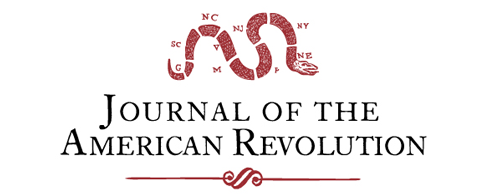



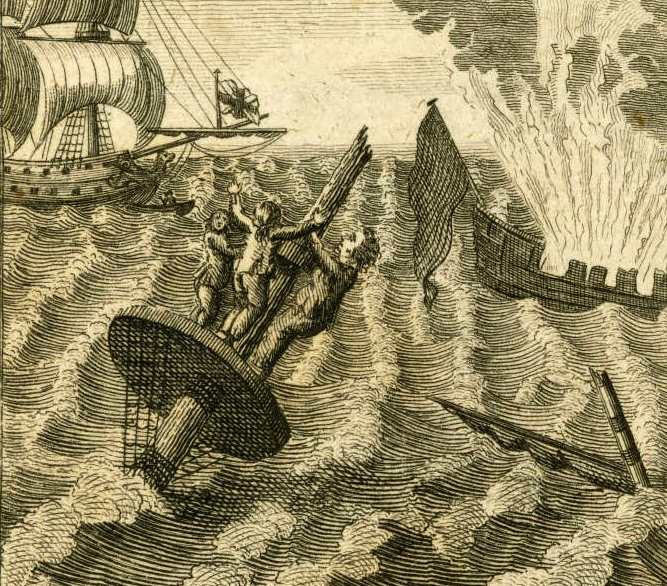
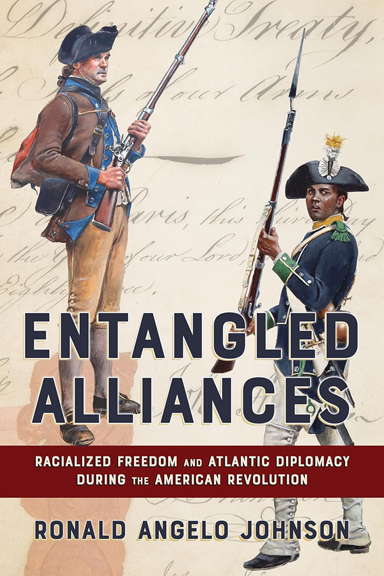
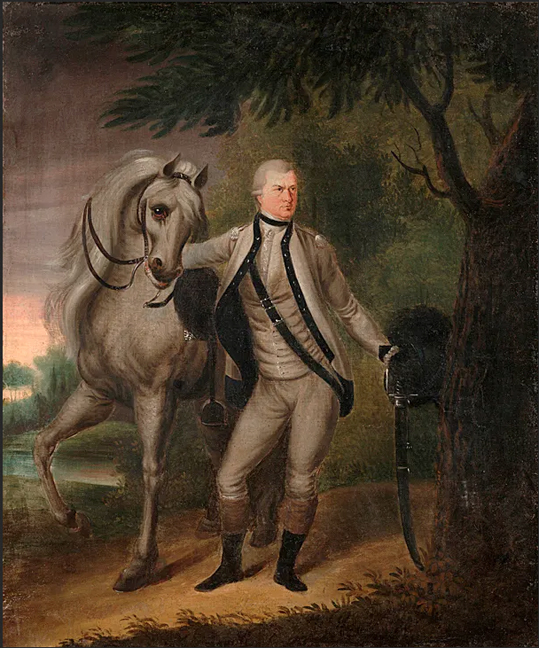

4 Comments
Fantastic work on this, David!
Thank you, sir
A small correction – the regiment suffered roughly a dozen killed at the Fort Laurens siege
Thank you, excellent research into the facts and events surrounding defense of the frontier.